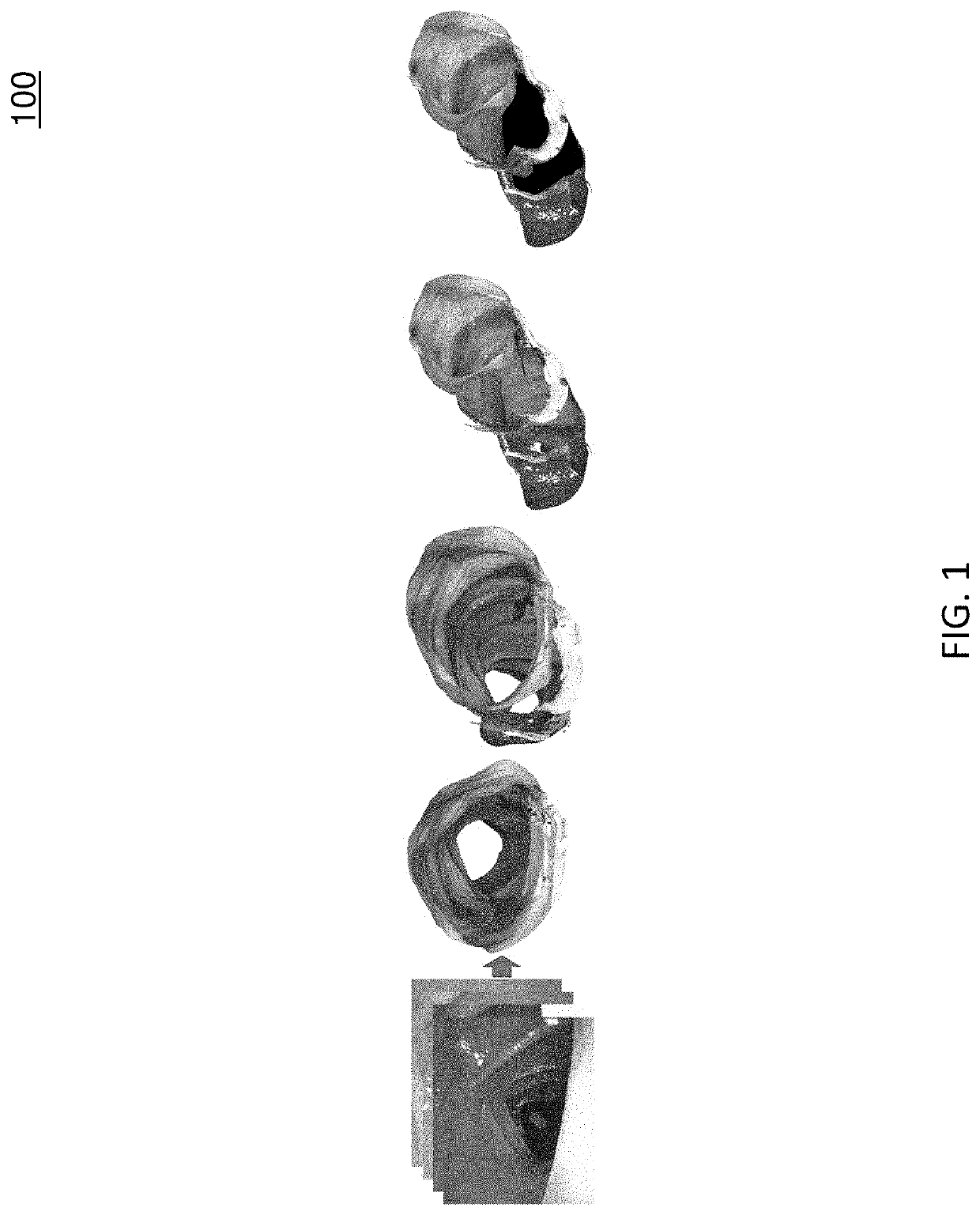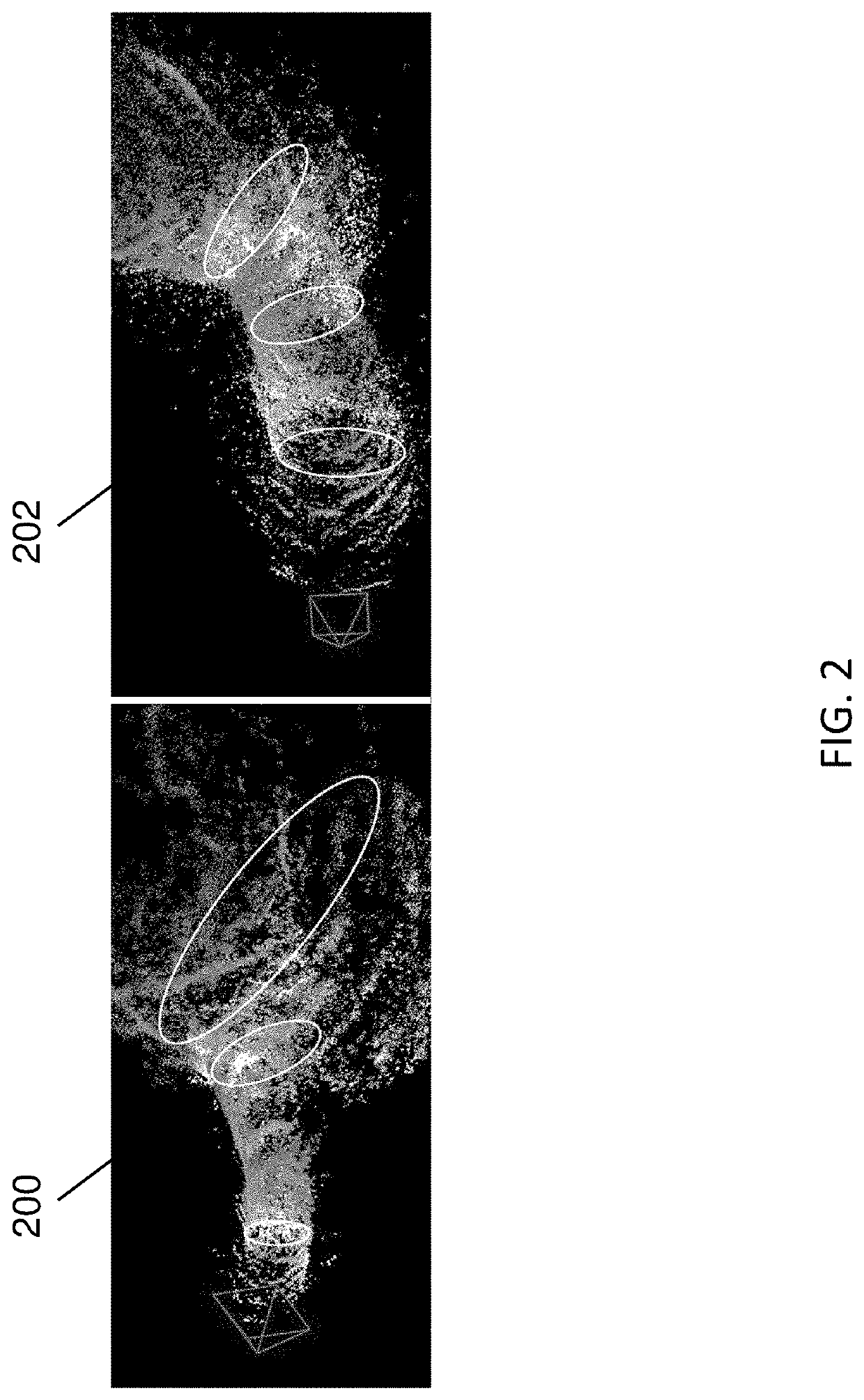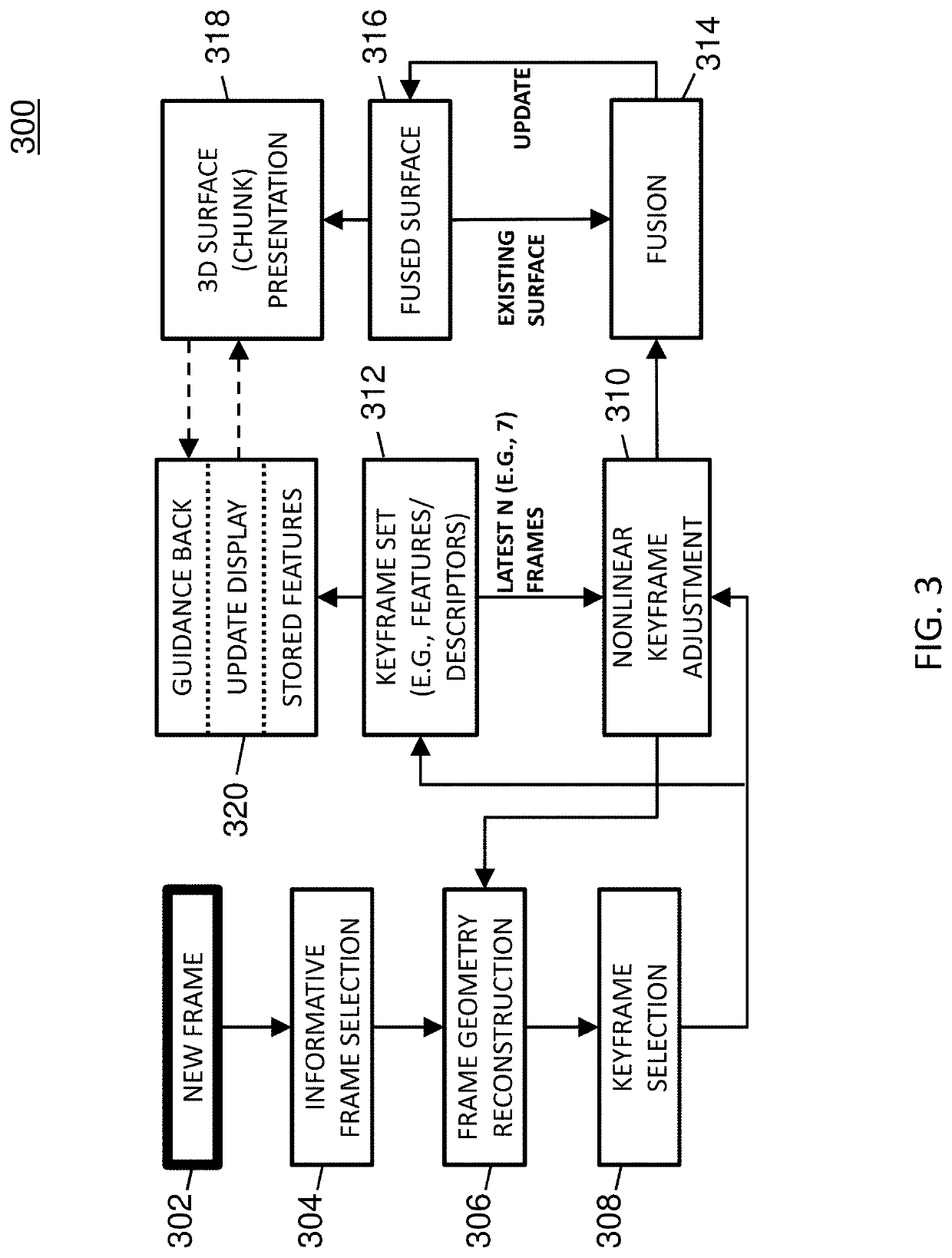Methods, systems, and computer readable media for three-dimensional (3D) reconstruction of colonoscopic surfaces for determining missing regions
a colonoscopic surface and three-dimensional reconstruction technology, applied in the field of three-dimensional (3d) surface modeling, can solve the problems of single-frame reconstruction and haustral occlusion (without fusion) which is inadequate to determine what has been missed, and the difficulty of detecting the missing colon surface from video alone, let alone quantifying its extent, and tracking (predicting camera pose)
- Summary
- Abstract
- Description
- Claims
- Application Information
AI Technical Summary
Benefits of technology
Problems solved by technology
Method used
Image
Examples
Embodiment Construction
[0018]Reference will now be made in detail to various embodiments of the subject matter described herein, examples of which may be illustrated in the accompanying drawings. Wherever possible, the same reference numbers will be used throughout the drawings to refer to the same or like parts.
[0019]The subject matter described herein relates to methods, systems, and computer readable media for three dimensional (3D) reconstruction of colon surfaces for determining missing regions. In accordance with some aspects of the subject matter described herein, an example deep-learning-driven simultaneous localization and mapping (SLAM) system may produce a camera trajectory and a dense reconstructed surface for colon chunks usable for displaying missing regions. The example dense SLAM system may utilize a recurrent neural network (RNN) to predict scale-consistent depth maps and camera poses of successive frames. In the example dense SLAM system, generated depth maps may be fused into a global s...
PUM
 Login to View More
Login to View More Abstract
Description
Claims
Application Information
 Login to View More
Login to View More - R&D
- Intellectual Property
- Life Sciences
- Materials
- Tech Scout
- Unparalleled Data Quality
- Higher Quality Content
- 60% Fewer Hallucinations
Browse by: Latest US Patents, China's latest patents, Technical Efficacy Thesaurus, Application Domain, Technology Topic, Popular Technical Reports.
© 2025 PatSnap. All rights reserved.Legal|Privacy policy|Modern Slavery Act Transparency Statement|Sitemap|About US| Contact US: help@patsnap.com



